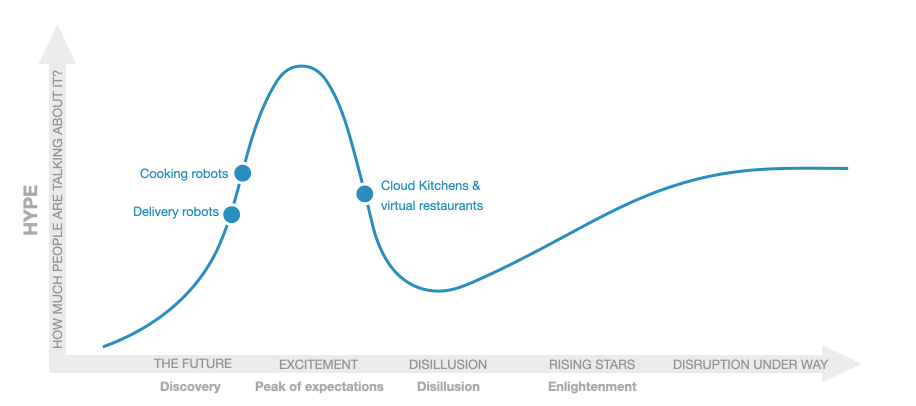If there is a thing that I find fascinating, it is robots (I am an engineer, after all). Behind robots is the promise of a better future where humans would be relieved from menial and demanding tasks. And this has happened in many areas. As consumers, we externalise most of our daily tasks as automation has progressed and productivity has increased.
Take the example of textile: at the end of World War II, few people in Europe bought ready-to-wear clothes. After decades of automation, productivity increase (and cheap labour), it would seem ludicrous to spend days and nights knitting yours. But for food, many people are performing repetitive tasks in restaurants, and most of us are trying to cook healthy meals at home (as best as we can). It would seem that now is finally the time for food automation!
Food automation is needed, notably by delivery startups. They are facing growing pressure to become profitable and to increase their spending on drivers, and decrease the fees taken on restaurants orders. The only way out of this problem is for restaurant delivery, and quick commerce platforms’ future will depend on their ability to automate both orders (cooked meals and groceries) and delivery.

As shown on the hype curve above (accessible here in our FoodTech trends report for more details), we are rather talking about long term trends. However, it seems that the pandemic has been a trigger (with all its consequences in terms of dissatisfaction with hospitality jobs) with a massive increase in the number of ventures, investments and partnerships with larger corporations. We can distinguish between:
- Cloud kitchens and virtual restaurants: they are commonplace, but we observe the conformation of many different business models. Some convergence (and consolidation) is needed.
- Cooking robots with a lot of different approaches from the robotic restaurant (Pazzi, Picnic), the automated kiosk (Chowbotics) or the collaborative robot (Miso). These still cost a lot, but their appeal is growing as fast as it is hard to find employees.
- Delivery robots, which can mean drones (Manna), delivery robots on the sidewalk (Starship) or autonomous delivery cars (Nuro). This space is coming farther away, but it is also growing faster. We wouldn’t be surprised to see that automated deliveries become common before the more massive use of robots in the kitchens.
Today, I would not advise you to survive only on meals deliveries as cloud kitchens mostly cook burgers, sushi and pizza. But as more and more delivery restaurant platform consumers mature in their habits, they will be looking for healthier foods, in more convenient formats (for couples and families). Then, in five to ten years, when fortunately cooking and delivery robots will be operational, the idea of food automation may impose itself as evidence.







